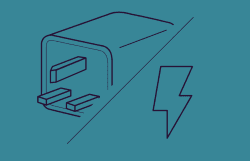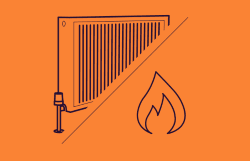Did you know? The Carbon Trust says that by implementing simple energy efficiency projects, the public sector could reduce their energy bill by £1 billion.
We know how important energy efficiency is for public sector organisations. Small budgets, spending public money safely, can be tough.
For example, hospitals and schools having to balance the safety and comfort of people in their care, while trying to reduce energy can be extremely difficult.
Making it increasingly challenging, local authorities are continually expected to promote environmental issues in their communities.
At Energy Solutions, we are here to help our customers, by offering free advice on how to improve their energy efficiency.
Let’s being with asking some questions to monitor how you currently use energy:
- Do you have the cooling and heating working at the same time?
- In the near future, do you have building refurbishments planned?
- Are your lights left on all and, or even all night?
If you answered yes to any of these questions, then with our help, you will likely be able to save yourself a lot of money, all in an easy and simple way.
Here are some statistics that may shock you:
- Utilising daylight in classrooms can have a reduction of up to 19% in lighting costs.
- Simply raising energy awareness could see a decrease of more than 25% in energy consumption in hospitals.
- By an increase of just 1°C in heating, fuel consumption will rise by around 8–10% in educational establishments.
So, what steps can you make to save yourself some money and become more energy efficient? Let’s dive right in.
Lighting Tips
- Purchasing daylight sensors and time switches can be a great investment to save some money and reduce your energy usage. This removes the possibility of leaving lights on for long periods of time when they aren’t in use as they help to avoid leaving lights on.
- Ensure your windows and lights are kept clean. Simply by not maintaining the cleanliness of lighting, in 3 years you can see light levels decrease by more than 30%.
- You should encourage staff to only use lights when necessary. Leave posters near light switches to make employees more aware of how using lights can decrease energy efficiency and impact the environment. When there are reduced numbers of staff in, use lighting only in the areas that are needed.
- At the end of the day, teach staff members to turn off lights when leaving. This simple guidance could save leaving lights on overnight which aren’t needed, saving both energy consumption and money.
- Energy-efficient lights are another popular method for reducing energy consumption. Replacing bulky, old lamps for newer, compact fluorescent lighting could save around 80% of energy usage in your office space. What a neat swap.
Ventilation Tips
- Air recycling should be optimised. This is especially important during times where there is low occupancy. Keep an eye on air recycling and you will see the difference in your energy bills
- Many newer air conditioning appliances have energy-saving features. Think about purchasing these types of equipment when improving energy efficiency. It will save you in the long run.
- By installing variable-speed drives, you can reduce your running costs when they’re used for pumps and fans.
- By simply keeping doors closed when possible, you will keep warm and cold air from escaping the room. Rooms will be kept warm and you will decrease the need to use heating, which uses more unnecessary energy.
Heating, Air Conditioning And Hot Water Tips
- Excessive cooling can cost you. Try to save energy by optimising your air conditioning. Aiming to only use cooling when necessary is key, so try to not use it below 24–26°C.
- To reduce heat loss in your building, try using window blinds. If you close your window blinds at night, or before the last person leaves the office, you can trap the heat indoors which can help to decrease heat loss.
- Make sure your radiator circuit is compensating for weather changes to decrease the risk of overheating.
- Overheating can be a common problem in buildings. A good tip is to make sure your radiator circuit is weather compensated as this will decrease the chance of overheating. Instead of turning down the heating, you can open windows when overheating occurs.
- A little tip is to switch off the heating for around 30 minutes towards the end of the day. Buildings will often retain the heat until staff have left the building. Try to match the heating times to opening and closing times to improve energy efficiency.
- For schools and hospitals, installing taps with timers is an easy way to reduce energy waste. Many people may leave taps running by accident, especially in larger buildings, the chances are increased. Timer taps remove this unnecessary waste of water, saving you money.



